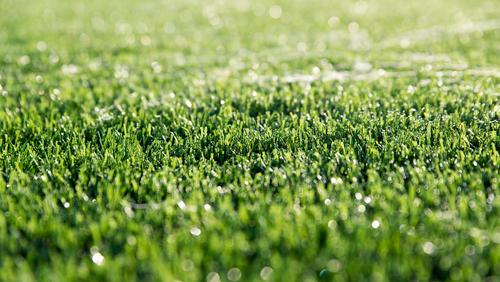
With the progress of science and technology over recent years, we have become able to synthesise almost everything - from computerised doctors to clones of sheep - science has ventured into it all. However, given the current climatic state of Mother Earth, a question often arises on the eco-friendliness of artificial grass.
Artificial grass has been subject to such questions ever since it was first introduced in the 1960s, but still many people remain unsure as to whether or not it is beneficial for the environment.
At Artificial Lawn Company, we have extensive experience installing artificial lawns of all shapes and sizes. Leveraging the knowledge of our expert team, we have put together this list of reasons why artificial grass can be eco-friendly and help improve your local environment and surroundings.
Reducing Harmful Emissions
An argument that critics often raise is that artificial grass is not natural and is, therefore, unable to perform the natural functions that grass is supposed to perform, like converting carbon dioxide to oxygen.
While the fact that fake grass cannot reduce carbon dioxide levels is true, what is important to remember is the upkeep of a natural lawn uses excessive electricity, water and fuel, especially if you have a petrol lawnmower - creating additional air pollution. Powered garden tools make up to 8% of our contribution to global warming. Just one hour of petrol-powered lawn mowing can produce as much pollution as four hours of driving.
What's more, real grass needs regular watering, lawn feed and various chemical additions just to keep it looking aesthetically pleasing, which can be just as detrimental to the environment and wildlife.
Protects Your Health, Along With the Environment
As previously mentioned, natural grass requires the use of fertilisers, pesticides and weed killers for general maintenance and upkeep. Chemistry suggests that such products make use of chemicals that contribute as much as 8% towards global warming. Artificial grass’ environmental impact not only avoids the addition of chemicals to the local ecosystem but also protects you, your children and your pets from the effects of these fumes and unnatural products.
Preserves Water
Natural grass gardens require water - a lot of it, actually - to maintain their lush green appearance all year round. It has been estimated that one square foot of grass requires gallons of water per year to maintain its appearance. Imagine how much water you could save by making use of artificial grass, instead, on a garden spread across a hundred square feet.
The world is moving towards an age of water scarcity, signs of which are apparent, already. In the case of water usage, artificial grass’ environmental impact is significantly lower than natural lawns. With a synthetic lawn installation, you can help do your part to reduce the amount of water wasted superficially.
Artificial Grass is Good for your Garden
Many critics hold that following heavy rainfall, excess rainwater has nowhere to go if an artificial lawn is installed but this simply isn't true. All of our artificial grasses are designed to not just look like the real deal, but to drain water like it, too. With that in mind, rainwater will not pool, it will drain through to the ground below without any unsightly puddles - or the mud that comes with them!
We are all responsible for ensuring our surroundings are environmentally sound, but you can rest assured that artificial grass can be eco-friendly and will not be detrimental to your outdoor space and the wildlife that resides there. If you are really environmentally conscious, we even offer our 30mm Eco-Pet lawn which is made from 80% recycled plastic and is fully recyclable at its end of use!
Want to know more? Contact our team here at Artificial Lawn Company today - we are here for you every step of the way.
